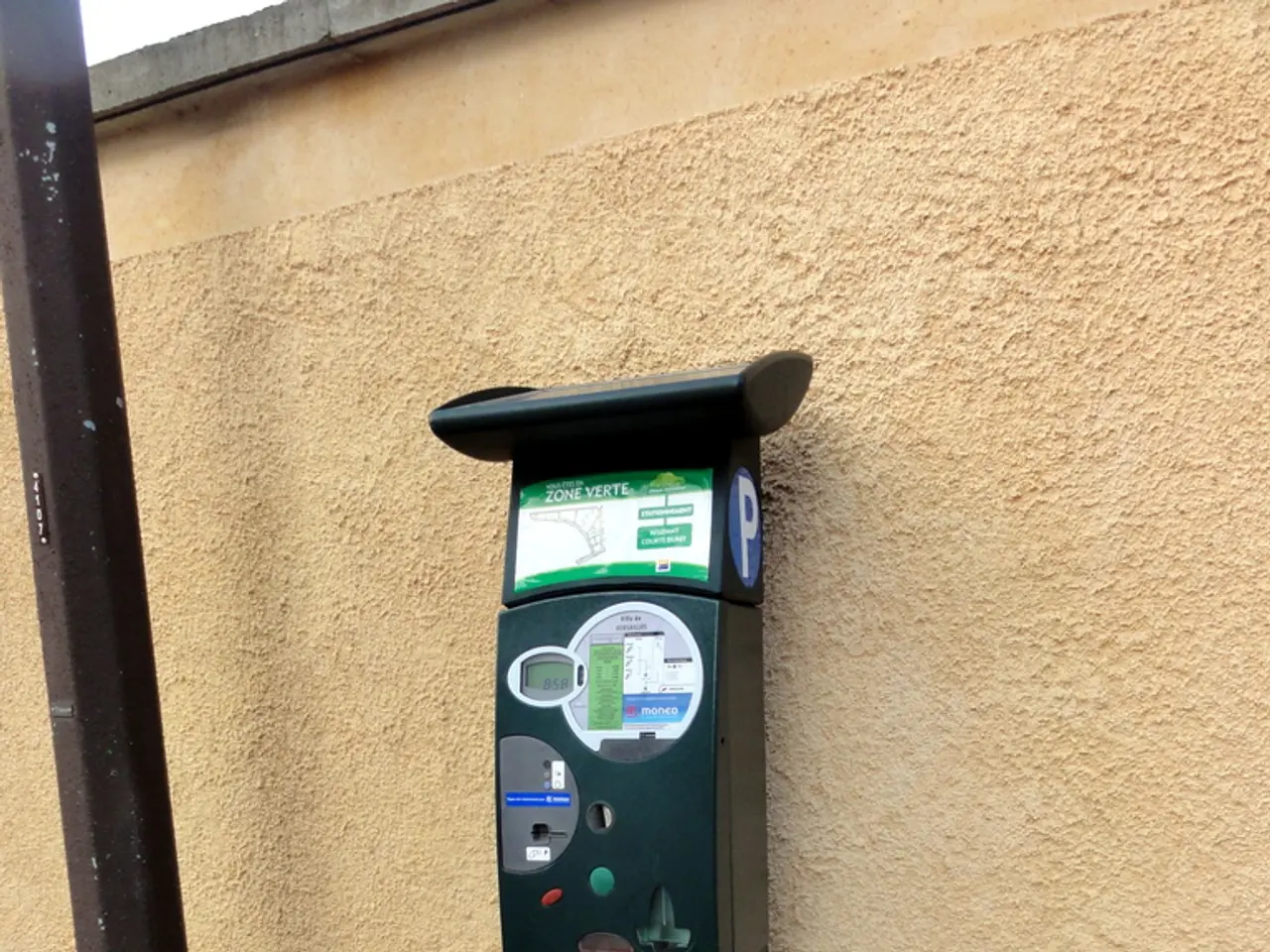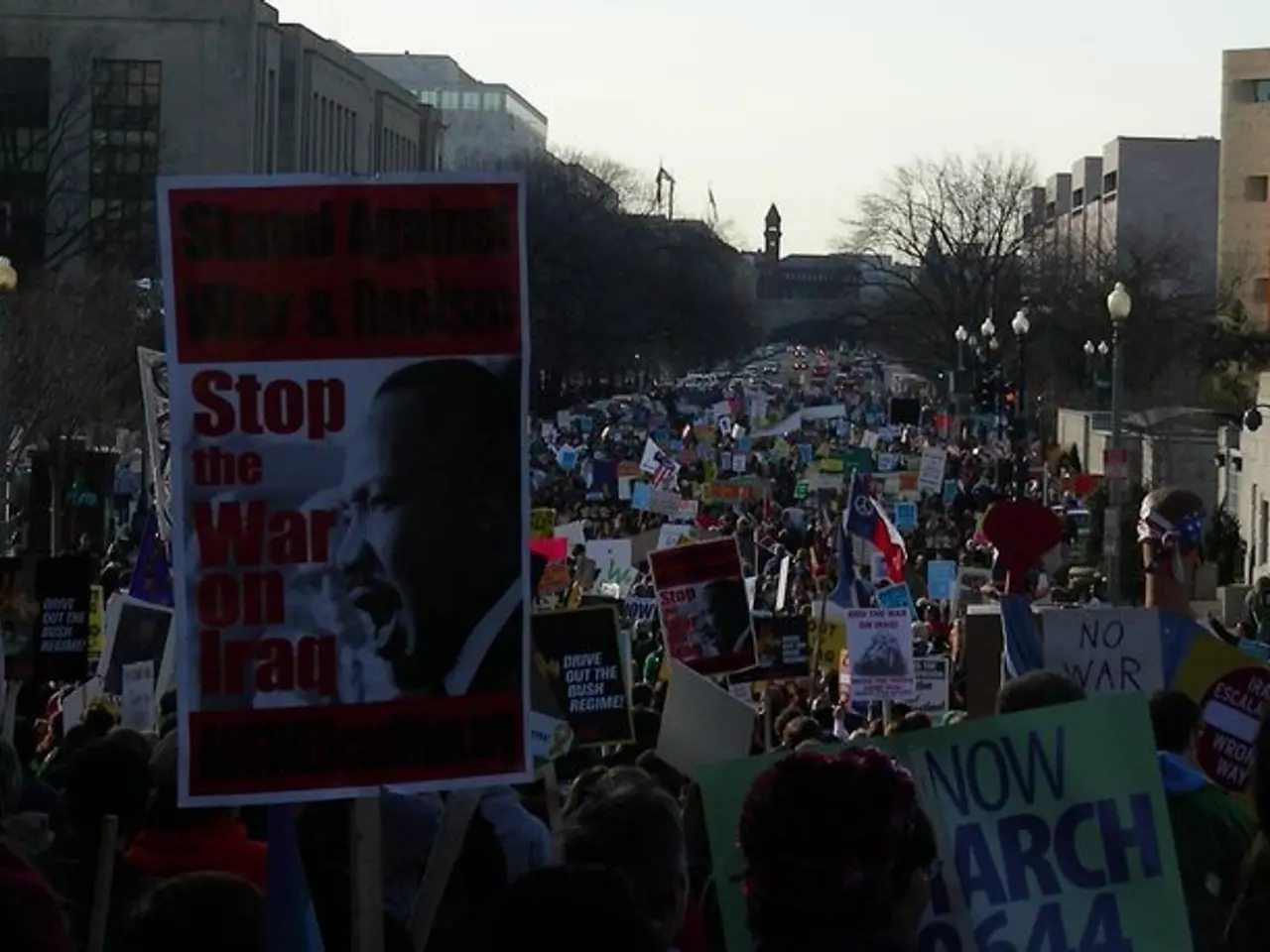Carry-on liquid restrictions on flights may be loosened according to the DHS Secretary, Noem.
In a significant shift for air travel safety, the Department of Homeland Security (DHS) is considering altering the amount of liquid ounces that passengers can carry onboard commercial planes. This announcement was made by DHS Secretary Kristi Noem during an event in Washington, D.C., on Wednesday.
The current policy, enforced by the Transportation Security Administration (TSA), allows travelers to carry liquids, gels, and aerosols in containers of 3.4 ounces (100 milliliters) or less per item. These containers must be placed in a one-quart, resealable plastic bag. Larger containers are required to be in checked baggage, with exceptions for medications and baby formula.
Secretary Noem hinted at potential changes to these liquid restrictions, stating that the TSA is evaluating its policies and may alter the size limits for liquids in carry-on luggage. This could be part of a broader effort to update security protocols while maintaining safety. However, no specific details about the potential changes or their timeline have been provided.
The TSA's policy of limiting liquid sizes is aimed at ensuring the safety of air travel, a measure that was put in place in 2006 following a foiled London terror plot that involved liquid explosives. The policy was also a response to the attempted bombing by the "shoe bomber," Richard Reid, on a flight from Paris, France to Miami, Fla., on Dec. 22, 2001. The policy of requiring passengers to remove their shoes for inspection before boarding commercial aircraft was implemented in 2006 as a response to this incident.
However, Secretary Noem announced on July 8 that the shoe removal policy was ending, citing enhanced security layers by the TSA, including additional officers, new scanners and technology, and the recently enforced REAL ID requirement.
As part of this ongoing evaluation, the DHS is working with tech companies to update these rules, and pilot programs may be launched at select airports before any nationwide changes are implemented. Secretary Noem emphasized a "multilayered screening process" that allows for changes in security procedures.
The Secretary also mentioned that the United States is currently facing threats from terrorists within the country and from criminals committing violent crimes. She pointed out that the U.S. critical infrastructure is vulnerable to attacks, citing several cyber incidents that occurred in the past year.
These potential changes to air travel safety procedures come as the TSA has recently eased other security measures, such as allowing passengers to keep their shoes on during screening at some airports. As the DHS continues to assess and update its policies, travellers can expect to see more changes in the near future.
- The Department of Homeland Security (DHS) is contemplating adjusting the liquid quantity limitations for carry-on luggage, as part of an endeavor to modernize security protocols while maintaining safety.
- The TSA's policy of restricting the size of liquids is a measure implemented in 2006 to enhance air travel safety in response to foiled terror plots and acts of violence.
- Secretary Noem stated that the TSA is assessing its policies, working with tech companies, and may potentially launch pilot programs to update the rules regarding the size of liquids in carry-on luggage.
- The Secretary pointed out that the U.S. is facing threats from terrorists within the country and from criminals committing violent crimes, and mentioned that critical infrastructure is vulnerable to attacks, citing recent cyber incidents.
- The DHS's ongoing evaluation could result in more changes in air travel safety procedures, following the recent easing of other security measures such as allowing passengers to keep their shoes on during screening at some airports. These developments could have broad implications for international politics, policy-and-legislation, environment, business, technology, travel, crime, and general-news.








